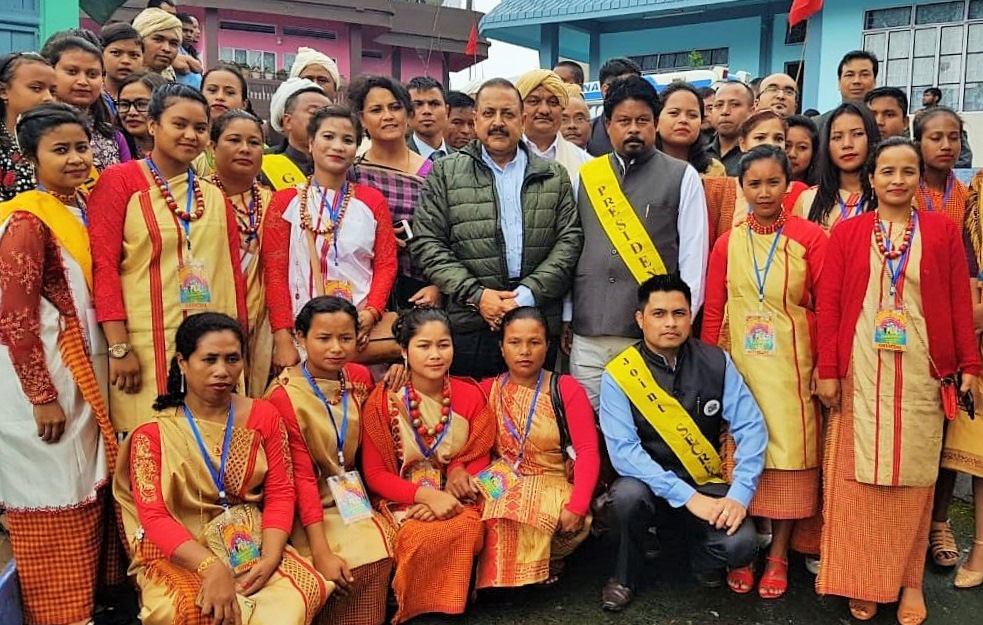
The Union Minister of State for Development of North Eastern Region Dr. Jitendra Singh attended the famous 4-day Meghalaya Annual Cultural Festival “Behdienkhlam” this year. The festival is held every year at the small peripheral town of Jowai in Meghalaya. The people of the State have a strong, emotional, sentimental, cultural and spiritual importance towards this festival.
Gaurav Bhatnagar writes for the Times of India that Behdienkhlam is the most popular festival of the Jaintia tribe, and is celebrated in the month of July for good health, property and bumper harvest. Although Behdienkhlam is celebrated all over the Jaintia hills, the main spectacle happens in the town of Jowai, about 64 km away from Shillong. The ‘Pnar’ people, who believe either in the traditional faith of ‘Niamtre’ or Hinduism observe this festival.
According to folktales, Jowai town was once covered by thick forest, without any human habitation. It was home of five deities, four stones and a river nymph. The four huge stones can still be seen at the four corners of Jowai town. The five deities wished that God would send humans to settle in this region, and thus a wandering Mongolian tribe arrived in this forest. To celebrate the presence of humans, ‘U-Mokhai’ the eldest of the deities began a ceremonial dance. Upon seeing the thunder and noise from the dance, the tribes got scared and began to flee. U-Mokhai then stopped and addressed them that they are safe and are meant to inhabit this forest.
The festival begins with sacrificing a pig to ‘Knia Pyrthat’ (thunder) followed by the ‘Wasan’ (Priest) ringing the brass bell along the main road of the town to the point where the forest begins. Rounded, polished and tall trunks of tree are felled in the sacred forest and are left in the woods for couple of days. The trunks are then brought to the town with great fanfare, dancing and singing. On the fourth day, the youth of the town led by the priest visit each and every home, climb to the roof and beat it with a bamboo stick to chase away any evil spirits.
People also display their artistic skills by erecting ‘rots’ (tall bamboo structures decorated with colour paper and tinsel). The rots are then carried to the ‘Aitnar site’, where women and men gather. The rots arrive and the polished, rounded logs are thrown into the river. The dancing men rush and try to balance themselves on the rolling and slippery logs. At the end, ‘Dad-Lawakor’, a type of football is played with a wooden ball.
